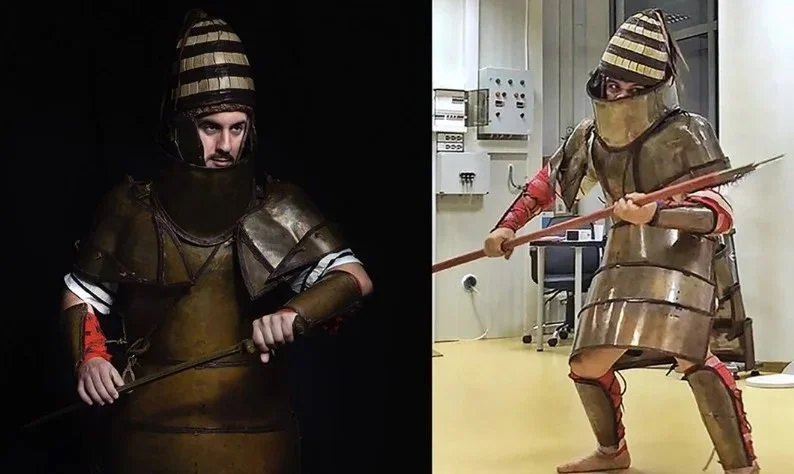Would an Ancient Mycenaean Armor Withstand Modern Battle? - The Experiment That Left Everyone Speechless
In a fascinating experiment that bridges the gap between ancient warfare and modern combat simulations, a renowned Greek professor put to the test the durability of one of the most iconic pieces of ancient armor - the Mycenaean panoply from Dendra. This armor, dating back approximately 3,500 years, was subjected to contemporary combat conditions to see if it could hold up against today's standards of warfare.
The Mycenaean Panoply
The Dendra Panoply, discovered in 1960 near the ancient Mycenaean site of Dendra, is one of the best-preserved examples of Bronze Age armor. It consists of a suit made from bronze plates, covering the chest, back, shoulders, arms, and legs, with additional leather components for flexibility. This armor was likely used by elite warriors, showcasing the advanced metallurgical and armor-making techniques of the Mycenaean civilization during the Late Helladic period, around 1450-1400 BC.
The Experiment
The experiment aimed to answer a curious question: could this ancient armor still protect a warrior in a modern battlefield scenario? The setup involved:
Simulation of Modern Combat: The armor was worn by a volunteer in a controlled environment simulating various combat situations. This included exposure to simulated gunfire, edged weapons, and blunt force trauma.
Physical Assessment: The professor and his team assessed how the armor manipulated the wearer's movement, its weight distribution, and its overall comfort over extended periods, which are crucial for sustained combat.
Durability Tests: The armor was tested against both ballistic and non-ballistic threats. This included shooting at the armor with modern firearms, albeit with reduced power to prevent complete destruction, and assessing its resistance to modern melee weapons like knives and axes.
Results and Observations
Durability: Surprisingly, the armor showed remarkable resilience. The bronze plates managed to deflect simulated bullets, though not without considerable denting and deformation. Against melee attacks, the armor's integrity was largely maintained, with only minor punctures where the bronze was thinner or where gaps existed.
Mobility and Comfort: The weight of the armor, which is significant by modern standards, did impact mobility. However, the design allowed for a surprising degree of movement, considering its age. The participant noted that while the armor was heavy, the distribution of weight was somewhat ergonomic, possibly due to the strategic placement of leather straps and padding.
Heat and Endurance: One of the major drawbacks was the heat retention due to the lack of ventilation, which would be a significant issue in prolonged engagements under the sun or in warm climates.
Implications and Conclusions
This experiment not only highlights the ingenuity of Mycenaean armor craftsmanship but also invites us to reflect on the evolution of protective gear over millennia. Here are some key takeaways:
Historical Insight: The test provides valuable insights into ancient combat strategies and the physical capabilities of warriors from that era, considering the weight and coverage of such armor.
Modern Application: While not practical for modern combat due to its weight and lack of ballistic protection against high-velocity bullets, the principles of layered armor could inspire contemporary designs, especially in terms of non-lethal protection or historical reenactment.
Cultural Preservation: Beyond the military aspect, this experiment aids in the preservation and appreciation of cultural heritage, bringing attention to ancient artifacts in a way that connects history with the present.
The experiment has sparked discussions in both academic and public spheres about the durability and functionality of ancient armor in modern contexts. It serves as a testament to both the resilience of Mycenaean technology and the universal human endeavor to protect oneself in battle, across centuries.
Sources:
This narrative is based on information from the article on iefimerida.gr.









